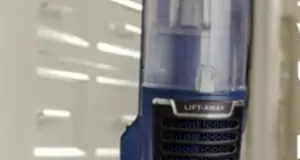How to use Vacuum Sealer Bags?
Are you worried about the lack of space? Does your kitchen look messy? Is your closet is running short of space, and do you have a bundle of clothes to tug in? Does your refrigerator is out of capacity to store more food items and leftovers? Well, it’s ten problems, one solution kind of thing. You don’t need to insert an extra closet; you don’t need a new or more oversized refrigerator. All you need are vacuum sealer bags to manage space.
A vacuum sealer bag is the best thing humankind has ever invented. These bags are great space savers. Doesn’t matter you need to store a kitchen or food item, or you need your blanket to set in your closet. Vacuum sealer bags can help you in every step of your life. Want to know more about these bags? Keep scrolling down, and you will find mind-blowing uses of vacuum sealer bags.
Types and Sizes of Vacuum Sealer Bags
Vacuum bags are available in different shapes and sizes. It would help if you chose between them wisely according to your needs. Here is a little insight so that deciding to buy the perfect-sized vacuum bag would become easier for you. Vacuum sealer bags are available in two types.
Chamber Machines First type is the chamber machine that uses smooth-textured bags. The packs in chamber machines are relatively expensive, but they are economical in use. Because they contain more bags, thus lowering the cost per bag and making them budget-friendly.
External Machines Extern; machines use mesh-textured bags. External machines provide extra “Doesn’tdon’tgrip” that these machines need for a good vacuum and seal, making the packs less expensive. But still, they are not economical as they contain fewer bags per pack, thus increasing the cost per bag.
Little tip: If you are confused between a chamber and an external machine, it depends on what and how much you have tha needs to be packed in vacuum sealer bags. A chamber machine would serve well and be cheaper in the long run because of its bags cost.
Now that you know the types o vacuum sealer bags, it’s time to learn about their usage how you can fit the right thing in the right bag. Again, I will try to explain every detail in a stepwise manner. So let’s begin.
Get the Right Vacuum Sealer Bag
The first step is determining what you need to seal and what would be more suitable for them. Means perfect vacuum-sealed bags, containers, jars, or food-grade buckets for whatever you want to store for a longer run.
Vacuum sealer bags are much more effective at keeping the tight seal for months than regular plastic bags. Several vacuum sealer bag manufacturers, such as Foodvac in the market. Well, they might seem a bit pricey, but the good thing is you can reuse them. Well, at least a couple of times before you dispose of them. Keep in mind that your vacuum sealer bag has to be the right size for what you’re sealing. If it’s too small, the seal won’t work. On the other hand, if it’s gone large, that would be a waste of bags.
Prepare the Food you want to Seal.
Getting your food prepped is just as important as choosing the right bag. For example, if you’re vacuum-sealing a lump of meat, make sure the cut is ready, with no nerves or fats around the meat. Cut the slab of meat into smaller portions so that they consume less space. If a sharp-edged thing is needed to be sealed, for example, uncooked pasta or meat with bones, you should first wrap the thing in a paper kitchen towel; this will protect the bag from being poked by sharp edges of food.
Want to vacuum-seal liquids? Well, you first need to freeze them. This little trick will make your life easier and will save you from a potential mess.
Fill the Vacuum Sealer Bags properly
Now it’s time to start filling up the bags with items. Always leave a little space between the vacuum-sealed edge and the food. Leave at least three to five inches at the top of the bag. When you are done filing and sealing the bag, ensure that you get a good seal that won’t wear off with time.
Start Vacuum Sealing
Now comes the fun part that is vacuum sealing. Grab your vacuum sealer and start using it. Firstly, lay your vacuum sealing bag flat on your kitchen counter. Next, open the lid and place the bag’s mouth on the sealing strip of your vacuum sealer. Do not place the bag on the vacuum channel. Now close the lid of your machine. Lastly, press the seal function button and wait for the vacuum sealer to finish the sealing process.
Storage of Sealed Bags
Vacuum-sealing keeps your food fresh for a longer time. Make sure the seal is tight, and immediately put your food in the freezer after sealing. To save your time and energy, write what is inside the bag and when it is being sealed.
Clean Vacuum Sealer after Sealing
You might not notice, but your vacuum seal machine will get dirty after the sealing process. For instance, juices from meat lumps can seep out of the bag and might get stuck in the crevices of the food sealer. That’s why it is necessary to clean the machine after every use. Next, grab a damp microfibre cloth or a wet wipe to clean the sealing strip and drip tray. Next, doDo the same for the opening to the vacuum chamber. Finally, clean the top and sides of the sealing machine with wipes. Let the machine dry completely, and then place it in a safe place.
Bottom Line
Vacuum sealers are so versatile and handy in use. You can store meat in the freezer or preserve your most used and favorite ingredients. You can reseal your food packages, or you can store leafy green vegetables for a long time. Vacuum sealer bags will keep good dry fresh for a long time. Cook sous vide or store your summer or winter clothes. Protect your important documents from moisture through vacuum sealing. Happy vacuum sealing.





